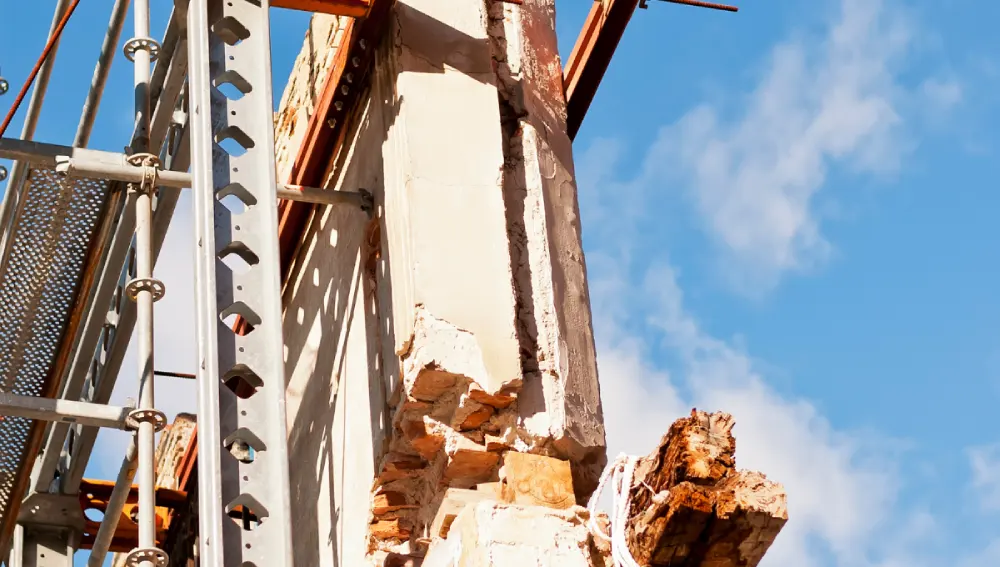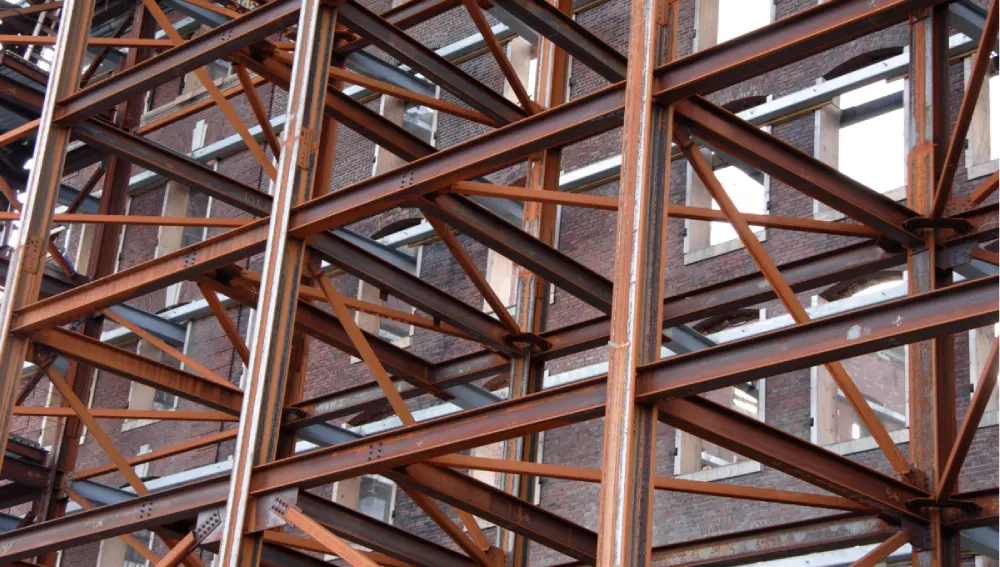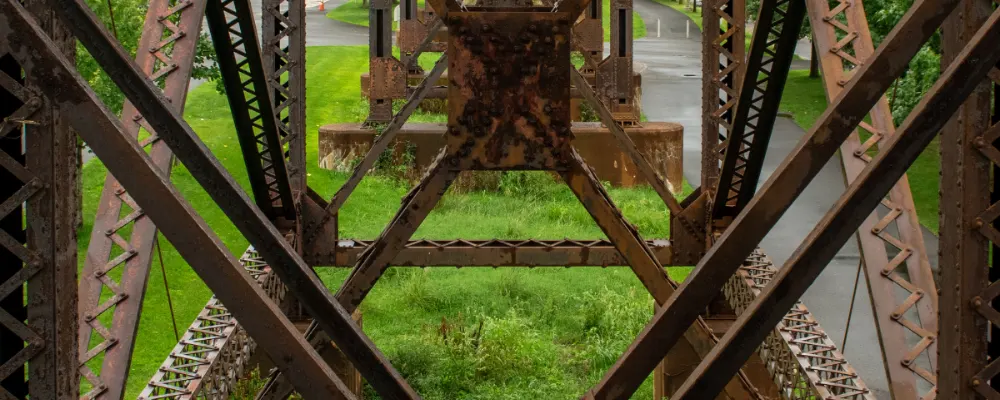V bracing is a construction technology that today stabilizes many buildings and structures. It is an important feature of any building for reasons of stability and human safety, especially in earthquake-prone areas. It is designed to give resistance to lateral forces like winds and earthquakes.
Understanding V Bracing

When using V bracing, two diagonal components meet in the center of the lower horizontal component after running from the top two corners of a horizontal beam or frame. Thus, this creates a “V” shape, which is why “V bracing” got its name. Its design is so basic, but it works so well to dissipate and absorb these buckling or swaying forces that pose a hazard to structures.
V Bracing Vs Inverted V Bracing
While the most conventional is V bracing, there is another variety known as Inverted V Bracing or Chevron Bracing. In this, both the diagonal members intersect at the center of the top horizontal member instead of at the bottom. Both types of bracing stabilise a structure, but usage depends on the sort of building design it is applied to.
V Brace
- Development: Two diagonal members cross in the middle of the horizontal element.
- Buckling Strength: This design makes the structure resistant to failure under pressure through a great reduction in buckling strength for the compression brace.
- Application: This is commonly used in seismic areas or places that have a high-recorded case of earthquakes where centric bracing in buildings saves people’s lives.
Inverted V Bracing (Chevron Bracing)
- Built Using an Inverted V Shape: Diagonal members join at the apex of the horizontal member.
- Stability: It offers stability like the V bracing. However, the load distribution may be different. So, it may suit some structures better.
- Use: Seismic regions are very common, but they are used in buildings where particular structural considerations need an inverted design.
How does V-bracing function?
V bracing has shown to be extremely successful in seismically active areas, where structures must be reinforced from the start to withstand earthquakes. It works by generating a V shape with its diagonal elements, which resist lateral motion during an earthquake or severe winds. Here’s a more detailed look at how it works:
Energy Dissipation
V bracing often uses strong dampers made of steel, concrete, or wood. When the top of the Brace frame shifts due to external forces, these dampers absorb and reduce energy. This energy reduction is vital. It lessens the impact of seismic activity on the building.
Buckling Reduction
The most significant benefits associated with V braces allow it to decrease the buckling capacity of the compression brace. Buckling occurs when a member is subjected to such large stresses that it becomes initiated to either bend or collapse entirely. V braces make sure that buckling is hugely reduced, thereby allowing the structure to stay firm under any condition.
Load Distribution
The V bracing plays an important role in the distribution of loads across the structure. An equal distribution of loads ensures that extreme stress does not become concentrated on any particular part of the building, which might cause its failure.
Horizontal Force Resistance
The V shape of the bracing mechanism, whether as metal V panels or V trusses, can resist the tensional or compressional forces that may incite the swaying of a particular building. This is most essential in high-rise structures or in buildings exposed to heavy winds or seismic activity.
Where is V-bracing Used?

It finds its most common application in highly earthquake-prone regions or where the structures are subjected to strong lateral forces. In seismic regions, structural design requires bracing to be centric; thus, V-bracing is used. Typical uses of V-bracing include:
- High-Rise Buildings: For high-rise structures, the wind and earthquake forces can be considerable. V-bracing stabilizes these structures, ensuring safety and functionality even during harsh weather. This robust design withstands environmental challenges, maintaining building integrity in all conditions.
- Industrial Buildings: Factories and warehouses often use V bracing in their structures. It reinforces them where heavy machinery or materials can cause vibrations or other harm.
- Bridges: Some bridges use V-bracing to help spread the load and resist forces from traffic and wind. This application is crucial for maintaining stability and structural integrity.
- Residential Buildings: V-bracing is important in earthquake-prone cities. It makes homes safer and more stable.
Benefits of V Bracing
- It gives stability: V-bracing adds structural rigidity to a building and is hence more stable to support horizontal forces.
- Effectiveness in Seismic Zones: V-bracing is very effective in seismic zones due to its provision of the required support against potential structural failure.
- Reduced Buckling: The V bracing is designed to reduce buckling, which in turn helps increase the lifespan of the structure.
- Versatility: V- bracing can be used in the construction of various structural materials such as steel, concrete, and wood; hence, it offers versatility in many building needs.
- Better Distribution of Loads: V- bracing ensures the structure doesn’t suffer from uneven load distribution, whereby one element supports more amounts of stress compared to others.
- Cost-Effective: Since V-bracing replaces or at least minimizes the need for other forms of reinforcement, it does indeed work out well in this regard as a cost-effective method of improving the safety and security of a building.
Conclusion
V bracing is essential in construction. It provides horizontal support and stability, especially in seismic zones. The diagonal members dissipate energy, reducing buckling. This ensures safety. In modern buildings—steel, concrete, or wood—V bracing is crucial. It adds strength and flexibility.
FAQs
V bracing keeps structures stable by resisting horizontal forcess, like earthquakes and high winds.
Seismic regions can use V-bracing to stabilise the building by providing more supportt, in the case of an earthquake.
In V bracing, the diagonal members meet at the vertex downward, while in inverted V bracing, they converge at the top Inverted V bracing is also referred to as chevron bracing, emphasising its similar function in providing lateral stability
The V bracing lowers the buckling capacity of the compression brace, so structural failure does not take place.
Yes, V bracing can be effectively applied in various types of structures, including those constructed from steel, concrete, and wood. Its versatility allows it to be utilised in different building designs while providing the necessary lateral stability regardless of the material used.

